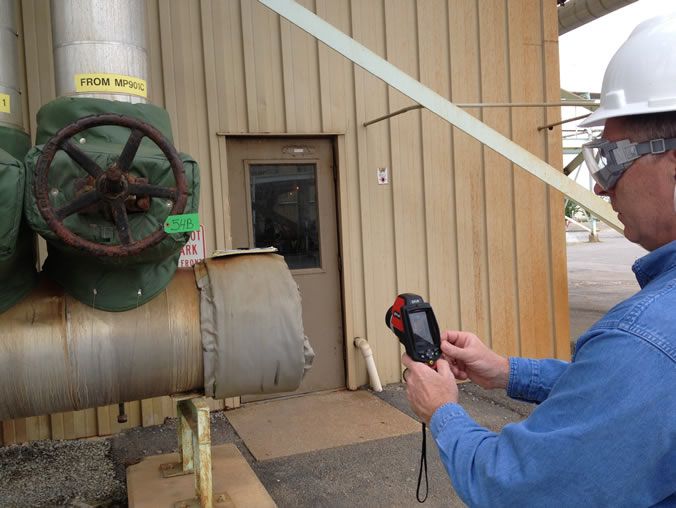For building managers and utility supervisors alike, installing new insulation can seem like a daunting task, particularly regarding financials. Fortunately, Shannon representatives can help clients through the process of fitting and installing new reusable blanket insulation. The first part of this process is called an energy survey.
“They want to know two things,” said Mike Makofsky, Northeast regional manager for Shannon Global Energy Solutions. “‘How much is this going to cost?’ and ‘How quickly can it pay for itself?’”
“A Shannon energy survey begins with a systematic, comprehensive, detailed list of uninsulated, hot bare surfaces,” said Makofsky.
Using the right combination of tools and techniques, Shannon representatives can ascertain where insulation is needed, whether to help prevent steam and heat loss, or protect employees from burns.
“[Blanket insulation is] a very cost-efficient way to generate energy efficiency, lower ambient room temperatures, and increase safety,” Makofsky said.
Since energy surveys are important to determine costs and payback times, accuracy is imperative. Therefore, there are definite do’s and don’ts in energy surveys.
DO have working knowledge of the equipment you are surveying.
If you are performing an energy survey in a boiler room, for example, understanding the different components will allow you to survey more accurately.
“You should understand what’s in a boiler room. You need to understand the different types of valves,” Makofsky said. “All boilers are different; you have to know what to look for.”
DON’T start the Energy survey just anywhere.
Follow the flow of equipment as it would generate heat, steam, etc. This helps to ensure no components get missed, increasing accuracy.
“You put your materials down and you just examine the room, just understand the flow. Understand A to B to C to D,” Makofsky said.
DO have the right tools for the job.
The most important of these is a well-calibrated infrared gun to measure surface temperatures. Be sure that the gun can measure from a distance of up to 20 feet. Also important is a pipe caliper, known in the field as a “pocket rocket.” This device measures the diameters of pipes and valves.
“That’s important because you’d have more heat loss with a six-inch valve than a four-inch,” said Makofsky. “Again, something that helps us to be as accurate as possible.”
DON’T forget to ask the facility manager questions.
Collecting information from the facility manager is an important part of the energy survey, particularly regarding how equipment is used day to day.
“You need to ask in terms of hourly usage, that’s very important,” Makofsky said. “How many hours a year is this equipment in operation? Never assume anything.”

